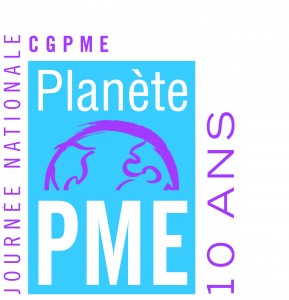Convinced of the central role of SMEs in the future of our economy, the CGPME and KPMG regularly join forces for reflection and actions in their favour. Partners in Planète PME and for the quarterly Barometer on SME financing and access to credit, they are today presenting the fruit of a new collaboration on the occasion of the 10th edition of Planète PME: a study devoted to the evolution of SMEs over the last ten years and which explores avenues of progress open to them. Here is the part dedicated to innovation.
In recent years, there has been renewed interest in SMEs. Measures to support innovation and export have been introduced in recent years. The presidential campaign saw the emergence of new promises to promote the development of SMEs. The study shows their major role in job creation, particularly skilled jobs, as well as their willingness to innovate. It also recalls the efforts still to be made in terms of investment, training and exports. With the winning trio of their development in sight: innovation, international and external growth.
Innovation: Key Indicators
While large companies invest in heavy industries, SMEs innovate more in the service sector.
SMEs outsource less than large groups: collaboration with the research world is not limited to researchers in companies. Indeed, and for reasons of cost reduction, SMEs tend more to outsource their R&D activities: 16 % of the total R&D budget of SMEs in 2009 against 11 % in 20053.
An increase in patent applications
French SMEs have integrated intellectual property into their innovation process. Despite a stable demand for patents (around 20 %) between 1999 and 2010, SMEs account for more than half of patent applicants among French legal entities. The increase in the number of patents filed has been achieved by VSEs rather than SMEs.
Distribution of patent applications according to the number of employees :
In 2010, 2,371 patent applications were published by 1,651 SMEs (and 303 by 754 ITEs). In three years, patent applications from SMEs increased by 18 % and those from ITEs by 112 %. Among the applicants, a category of SMEs is gradually emerging: small enterprises for which R&D is the main activity.
Companies that regularly file a patent are more likely to consider extending their patent internationally. The United States and Europe are the main areas of extension. More than 60 % of regular applicants are considering extending their patent in Asia.
Rate of patent applicants considering international extension of their patent in 2007 :
- regular patent applicant: 81 %
- first patent applicant: 48 % (Source: OSEO, Observatoire des PME, "PME et brevet" in "Regards sur les PME", 2009).
The changing environment for innovation
The creation and development of competitiveness clusters
Set up in 2005, the aim of the competitiveness cluster policy is to strengthen the competitiveness of the French economy and to develop growth and employment. It encourages partnership approaches between three key players in innovation: businesses, research establishments and training organisations, based on a common strategy on a given theme and territory. In 2005, 67 competitiveness clusters were labelled in France. Today, there are 71 competitiveness clusters.
They have contributed to the emergence of more than 1,000 collaborative R&D projects financially supported by the State, within the framework of calls for projects from the Single Inter-Ministerial Fund (FUI), as well as by local authorities.
SMEs are the most numerous in the clusters, but their share is declining: SMEs were the most common type of companies in the competitiveness clusters in 2074. Approximately 60 % of labelled projects involve at least one SME and 31 % of labelled projects are carried by an SME. However, this figure fell by 5 % in 2010 with 33 fewer projects.
The Research Tax Credit (CIR), an essential tool whose rise is being promoted by large groups rather than SMEs
This tax measure, introduced in 1983 and amended by the 2004, 2008 and 2011 Finance Acts, is designed to encourage the development and competitiveness of innovative businesses by allowing a tax deduction of 30 % of research and development expenses.
The number of SMEs benefiting from the Research Tax Credit (CIR) increased by 105.3 % between 2005 and 2009, with an increase of 62 % between 2007 and 2008, whereas the annual growth before 2007 was only 14 %5. The total amount allocated to all SMEs increased by 120.5 % between 2005 and 2009.
However, the average amount received by SMEs increased by only 8 % while the average amount received by large companies increased by 277.4 %.
Evolution of the number of beneficiaries of the Research Tax Credit, total and average amount received per company :
Number of beneficiaries :
- SMEs (0 to 250 employees) 2005: 4,407 / 2009: 9,982
- Large companies (> 5,000 employees) 2005: 56 / 2009: 75
Total amount (€ million) :
- SMEs (0 to 250 employees) 2005: 445 / 2009: 1,407
- Large companies (> 5,000 employees) 2005 :143 / 2009 : 1,497
Average amount (in € million) :
- SMEs (0 to 250 employees) 2005: 0.1 / 2009: 0.14
- Large companies (> 5,000 employees) 2005: 2.55 / 2009: 20
(Source: CJD, The SME panorama - 2011)
Financing innovation facilitated by OSEO 2009 2010
- Number of companies supported: 2009: 80,000 / 2010: 80,000
- Total funds raised (€): 2009: 25 billion / 2010: 29 billion
Distribution of aid :
- Total amount of direct aid for innovation (€): 2009: 560 million / 2010: 1.9 billion
- Total guaranteed loans for investment (€): 2009: 8.4 billion / 2010: 9.2 billion
- Total amount of financing provided in partnership with banks and equity providers (€): 2009: 5 billion / 2010: 9 billion. (Sources: OSEO)
OSEO, through its public service mission to support innovation, is the privileged interlocutor of SMEs, co-financing and supporting their innovation projects. OSEO also manages the Single Inter-Ministerial Fund (FUI) programme on behalf of the State, which finances the projects of competitiveness clusters. In 2011, OSEO supported 84,000 companies. The latter obtained €31 billion in public and private financing.
Setting up schemes to encourage innovation in SMEs
The number of beneficiaries of the Young Innovative Company (YIE) status has doubled since its creation in 2004, from 1,300 to more than 2,600 in 2010.
Other schemes have made it possible to support innovation in SMEs, such as CDC Entreprises' National Seed Fund or the CIFRE scheme (Conventions Industrielles de Formation par la Recherche) which subsidises any company that hires a doctoral student to place him/her at the heart of a research collaboration with a public laboratory.
In 1999, the Loi Allègre sur l'innovation et la recherche encouraged closer links between teachers and researchers and the business world. In 2009, approximately 60 %6 of SME R&D employers were business researchers, an increase of 10 points in four years.
The development of an eco-system around innovation
The last ten years have seen the creation of a true innovation ecosystem. The various actors that make it up have contributed to the development of innovation in SMEs through various initiatives, including the following examples:
- The actions of the regional innovation agencies and the CRCIs, which facilitate access to financing and advise innovative project leaders.
- Network initiatives such as the Retis association, which supports more than 13,000 innovative companies, or InnoTech, the Entreprendre network programme for technology companies.
- Competitions such as Tremplin Entreprises (ESSEC/Sénat) or the national competition to assist the creation of innovative technology companies (MESR/OSEO).
{Jacuzzi on}












